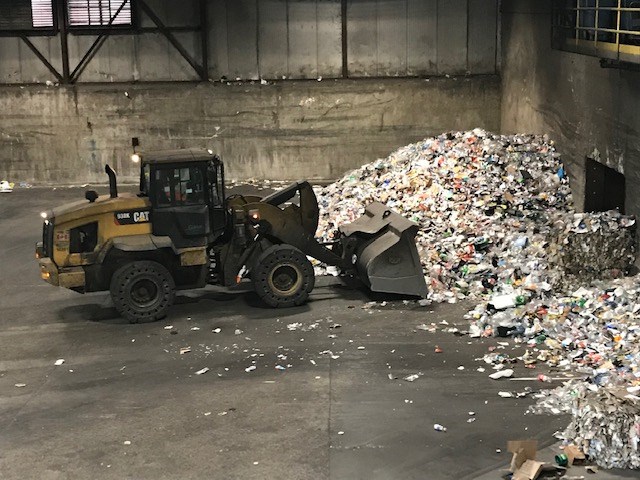The “hard work” of Guelph residents to sort their waste before putting it at the curb is paying off, say city officials, with 60 per cent of household waste being diverted from landfill.
The figure was released Friday in the first annual Corporate Environmental Sustainability Report.
While the city has previously announced its overall diversion rate – it’s held steady at roughly 58 per cent for the past three years – this is the first time it has broken out and publicly announced the residential component of that.
“We are happy with the level of effort and commitment of the community,” Cameron Walsh, the city’s manager of solid waste, told GuelphToday. “It’s a top-performing program but we want to continue to drive that higher.”
Guelph has a three-bin waste collection system, with residents putting out organic waste weekly, along with recycling and general waste collected on alternating weeks.
According to the report, residents put out 13,037 tonnes of general waste last year, as well as 10,294 tonnes of organic material and 9,388 tonnes of recycling. That means about 60 per cent of residential waste avoids the landfill.
“It helps residents to have their own metric. … It’s tied directly to our programming, cause and effect, so we can better determine the effectiveness of campaigns and we can see their efforts more directly,” said Walsh. “It’s a lot of work for our residents and for staff to maintain that level of performance in a changing environment.”
The city’s landfill diversion efforts include curbside audits, education programs for students and new city residents, as well as instructional materials that help people figure out what goes into which of the three bins.
The diversion rate is based on weight, so there are numerous factors at play, Walsh explained. Chief among them are changes to the packaging industry. For example, drinking boxes are recyclable but drinking pouches are not – as the industry moves toward more pouches, that means a lower diversion rate.
The same is true with the decrease in the number of newspapers being delivered to people’s homes, he added.
“The amount of the material has dropped, therefore the weight has dropped, therefore we’re not seeing that in our diversion numbers.”
By breaking out residential waste numbers, it allows for year-by-year comparisons in future.
The report, now to be compiled annually, highlights a number of other environmentally conscious metrics. Among them are:
-
city facilities and fleet energy consumption is down by 2.2 million kWhe (1.45 per cent) in the past year — enough to power over 250 homes for a year
-
increased our renewable energy supply by 1 million kWhe (3.7 per cent) – enough to power over 100 homes for a year
-
residents disposed of close to 100 kg less waste per person compared to the national average.
-
the city’s organic waste processing facility diverted 77 per cent of organics from landfill and produced 6,892 tonnes of finished compost — almost equivalent to the weight of 1,000 elephants
-
municipal facilities consumed 157, 149, 609 KwHe of energy, down 1.45 per cent from a year prior
-
Nearly a quarter, 24.4 per cent, of the city’s energy use came from renewable sources – biofuels, digester gas and renewable energy supplied by the grid – representing a 3.7 per cent increase from 2018
-
the cities facilities and fleet produced 0.02 per cent more greenhouse gas emissions
“Eventually this will grow with years that we’ll see longer-term trends and how we’re making progress,” said Bryan Yo-Han, manager of corporate energy and climate change, who “played quarterback” with the report, pulling together information from various city departments.
“We’re going to have some up years. We’re going to have some down years. But at least we can see how we’re doing over that longer term and medium-term trends that we’re going to be tracking.”
In terms of the slight bump in greenhouse gas emissions, Ho-Yan said it is “not a significant increase and can even be due to data quality, rounding error or conversion factors.”
